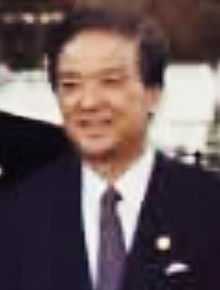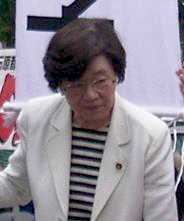Japanese general election, 1990
Japanese general election, 1990

|
|
|
|
All 512 seats to the House of Representatives of Japan
257 seats needed for a majority |
| Turnout |
73.31% |
| |
First party |
Second party |
|
| |
 |
 |
|
| Leader |
Toshiki Kaifu |
Takako Doi |
|
| Party |
Liberal Democratic |
Socialist |
|
| Leader since |
8 August 1989 |
8 September 1986 |
|
| Leader's seat |
Aichi-3rd |
Hyogo-2nd |
|
| Last election |
300 seats, 49.42% |
85 seats, 17.23% |
|
| Seats before |
295 |
83 |
|
| Seats won |
275 |
136 |
|
| Seat change |
 20 20 |
 53 53 |
|
| Popular vote |
30,315,417 |
16,025,473 |
|
| Percentage |
46.14% |
24.35% |
|
|
|
Japan held a nationwide election for the House of Representatives, the more powerful lower house of the National Diet than the upper house, on February 18, 1990.
Results
Summary of the 18 February 1990 Japanese House of Representatives election results
| Alliances and parties |
Votes | % | +/- | Total seats | +/- |
| Liberal Democratic Party (LDP) Jiyū Minshutō |
30,315,417 | 46.14% | | 275 | -25 |
| Socialist Party of Japan (JSP) Nihon Shakai-to |
16,025,473 | 24.35% | | 136 | +51 |
| Komeito Kōmeitō |
5,242,675 | 7.98% | | 45 | -9 |
| Japanese Communist Party (JCP) Nihon Kyōsantō |
5,226,987 | 7.96% | | 16 | -10 |
| Japan Democratic Socialist Party (DSP) Minsha-tō |
3,178,949 | 4.84% | | 14 | -12 |
| United Socialist Democratic Party |
566,957 | 0.86% | | 4 | 0 |
| Progressive Party |
281,793 | 0.43% | | 1 | +1 |
| Independents |
4,807,524 | 7.32% | | 21 | +12 |
| Other Parties |
58,536 | 0.09% | | 0 | -6 |
| Total (turnout 73.3%) |
66,215,906 |
100.0 |
|
512 |
|
| Source: Inter Parliamentary Union |
| Vote share |
|---|
|
|
|
|
|
| LDP |
|
46.14% |
| JSP |
|
24.35% |
| KP |
|
7.98% |
| JCP |
|
7.96% |
| DSP |
|
4.84% |
| USDP |
|
0.86% |
| PP |
|
0.43% |
| Independents |
|
7.32% |
| Others |
|
0.09% |
| Parliament seats |
|---|
|
|
|
|
|
| LDP |
|
53.71% |
| JSP |
|
26.56% |
| KP |
|
8.79% |
| JCP |
|
3.13% |
| DSP |
|
2.73% |
| USDP |
|
0.78% |
| PP |
|
0.20% |
| Independents |
|
4.10% |


